Mitsubishi Eclipse Cross vs Toyota RAV4 – Vilken bil är det bättre valet?
Jämför prestanda, bagageutrymme, förbrukning och pris på ett ögonblick.
Ta reda på vilken bil som är det bättre valet – Mitsubishi Eclipse Cross eller Toyota RAV4?
The automotive market is ever-evolving, with new technologies and innovations continuously pushing the boundaries of what is possible in vehicle performance, fuel efficiency, and environmental sustainability. In this article, we dive deep into a comparison between two popular compact SUVs: the Mitsubishi Eclipse Cross and the Toyota RAV4. These models offer unique features and technologies, making them strong contenders in their segment. Let's explore their specifications, performance, and innovative aspects.
Engine and Performance: Power Under the Hood
The Mitsubishi Eclipse Cross is equipped with a 2.36-liter four-cylinder engine, which produces 188 horsepower (138 kW). This vehicle offers an impressive all-wheel drive option and is designed for both efficiency and performance. With a consumption rate of just 2 L/100km, the Eclipse Cross stands out for its fuel efficiency. It also boasts an electric-only range of up to 45 km, making it a great choice for short commutes.
In contrast, the Toyota RAV4 provides a range of engine options, including both full hybrid and plug-in hybrid variants. Its 2.5-liter four-cylinder engine produces between 218 and 306 horsepower (160 to 225 kW), depending on the model. The RAV4’s fuel consumption ranges from 1 L/100 km in its plug-in hybrid form to approximately 5.6 L/100 km in standard configurations. It offers an electric range of up to 75 km, allowing for versatility and reduced fuel usage during short drives.
Acceleration and Speed: Getting from 0 to 100
The Mitsubishi Eclipse Cross has a claimed acceleration time of 0-100 km/h in approximately 10.9 seconds, with a top speed of 162 km/h. While this performance is respectable, the Toyota RAV4 showcases stronger acceleration figures, achieving 0-100 km/h times ranging from 6 to 8.4 seconds, depending on the model variant. Furthermore, the RAV4's maximum speed reaches 180 km/h, reflecting its robust performance capabilities.
Dimensions and Cargo Capacity: Room to Breathe
In terms of dimensions, the Mitsubishi Eclipse Cross measures 4,545 mm in length, 1,805 mm in width, and 1,685 mm in height, providing ample space for passengers and cargo. The trunk capacity stands at 359 liters, which is ample for everyday needs.
The Toyota RAV4, being slightly larger, measures 4,600 mm in length, 1,855 mm in width, and also stands at 1,685 mm in height. Its trunk capacity significantly outshines the Eclipse Cross, with 520 to 580 liters, depending on the configuration. This additional cargo space gives RAV4 owners an edge in practicality for families or those needing to haul larger items.
Innovative Technologies: Features That Matter
The Mitsubishi Eclipse Cross is outfitted with several innovative features, including a state-of-the-art infotainment system, adaptive cruise control, and lane departure warning systems, all tailored to enhance safety and driving comfort.
On the other hand, the Toyota RAV4 excels in technology with its advanced Safety Sense suite, which includes pre-collision systems, dynamic radar cruise control, and lane-keeping assist. Additionally, the RAV4 features a user-friendly multimedia interface, making tech integration smoother for users. The plug-in hybrid models also incorporate regenerative braking, optimizing energy use for a more sustainable drive.
Environmental Considerations: Going Green
When comparing environmental impact, the Mitsubishi Eclipse Cross scores well with a CO2 emission level of just 46 g/km, placing it in the B efficiency class. This makes it a candidate for eco-conscious drivers.
The Toyota RAV4 hybrid models have CO2 emissions ranging from 22 to 128 g/km, based on engine type and configuration. The plug-in hybrid variant offers the lowest emissions, emphasizing Toyota’s commitment to reducing the environmental footprint of their vehicles. Although it fits into the D efficiency class for some versions, its diverse power options offer flexibility for various consumer needs.
Final Thoughts: Which to Choose?
In conclusion, both the Mitsubishi Eclipse Cross and the Toyota RAV4 deliver solid performance, modern technology, and practicality suitable for today's drivers. The Eclipse Cross excels in fuel efficiency and affordability, while the RAV4 impresses with its power options, advanced safety features, and cargo capacity.
Your final decision may boil down to specific needs—whether you prioritize fuel efficiency, performance, or space, both contenders have a lot to offer in the compact SUV class. As the automotive landscape continues to evolve, these two vehicles remain strong choices for those seeking a blend of innovation and capability.
Nu blir det konkret: de tekniska skillnaderna i detalj
Kostnader och förbrukning: Pris och effektivitet är avgörande faktorer vid köp – och just här visar sig ofta de största skillnaderna.
Toyota RAV4 har ett minimal prisförsprång – den börjar på 473600 kr, medan Mitsubishi Eclipse Cross kostar 485200 kr. Skillnaden är ungefär 11555 kr.
Även bränsleförbrukningen visar skillnader: Toyota RAV4 klarar sig med 1 L och är därmed övertygande snålare än Mitsubishi Eclipse Cross, som drar 2 L. Skillnaden är ungefär 1 L per 100 km.
När det gäller räckvidd presterar Toyota RAV4 klart synligt bättre: Den klarar upp till 75 km, ungefär 30 km mer än Mitsubishi Eclipse Cross.
Motor och prestanda: Under huven avslöjas vilken modell som är sportigare och vem som är snabbast iväg.
När det gäller motoreffekt har Toyota RAV4 ett klart synligt övertag – 306 hk mot 188 hk. Det motsvarar ungefär 118 hk hk mer.
I accelerationen från 0 till 100 km/h är Toyota RAV4 betydligt snabbare – 6 s mot 10.90 s. Det är ungefär 4.90 s snabbare.
När det gäller toppfart ligger Toyota RAV4 knappt märkbar före – den når 180 km/h, medan Mitsubishi Eclipse Cross stannar vid 162 km/h. Skillnaden är omkring 18 km/h.
Utrymme och praktisk användning: Kupéutrymme, bagage och lastförmåga är avgörande för vardagskomforten. Här räknas flexibilitet och bekvämlighet.
Båda bilarna har plats för 5 personer.
När det gäller tjänstevikt är Toyota RAV4 något lättare – 1745 kg mot 1985 kg. Skillnaden är omkring 240 kg.
När det gäller bagageutrymme erbjuder Toyota RAV4 klart synligt mer plats – 580 L mot 359 L. Skillnaden är omkring 221 L.
Vid maximal lastvolym presterar Toyota RAV4 märkbart bättre – upp till 1690 L, cirka 582 L mer än Mitsubishi Eclipse Cross.
Även lastkapaciteten visar skillnad: Toyota RAV4 påtagligt bättre – 600 kg mot 440 kg. Skillnaden är ungefär 160 kg.
Vårt omdöme: Toyota RAV4 visar sig vara är klart överlägsen och blir därmed vår DriveDuel Champion!
I den här jämförelsen är Toyota RAV4 den mer kompletta allroundbilen.
Mitsubishi Eclipse Cross
Mitsubishi Eclipse Cross har gjort starka intryck på bilmarknaden med sin distinkta design och sportiga karaktär. Bilen erbjuder en bekväm körupplevelse och ett flexibelt utrymme, vilket gör den perfekt för både stadskörning och längre resor. Med sin robusta konstruktion och moderna teknik, är Eclipse Cross en attraktiv val för både familjer och äventyrsuniversum.
detaljer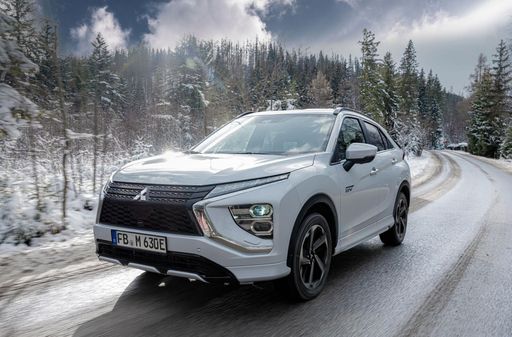 @ Mitsubishi Motos
@ Mitsubishi Motos
 @ Mitsubishi Motos
@ Mitsubishi Motos
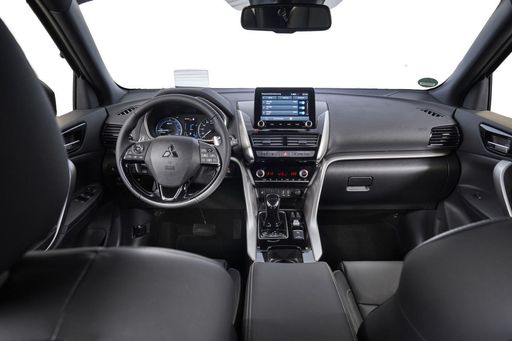 @ Mitsubishi Motos
@ Mitsubishi Motos
Toyota RAV4
Toyota RAV4 fortsätter att vara en populär SUV med sin kombination av stil, komfort och hållbarhet. Med sin rymliga interiör och moderna design är den perfekt för både stadsresor och äventyr på landet. Körde i den är en upplevelse som erbjuder både körglädje och frid, oavsett vägförhållandena.
detaljer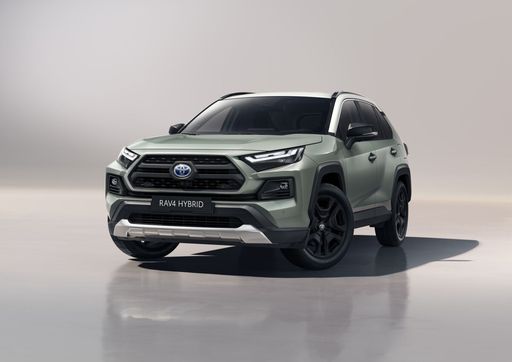 @ Toyota
@ Toyota
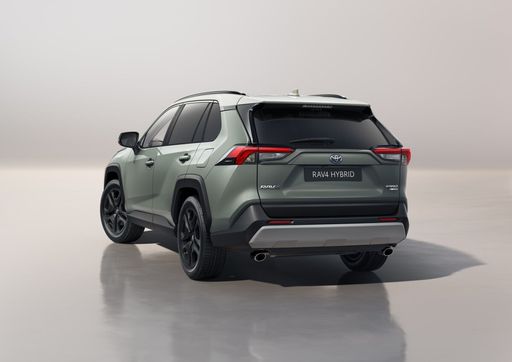 @ Toyota
@ Toyota
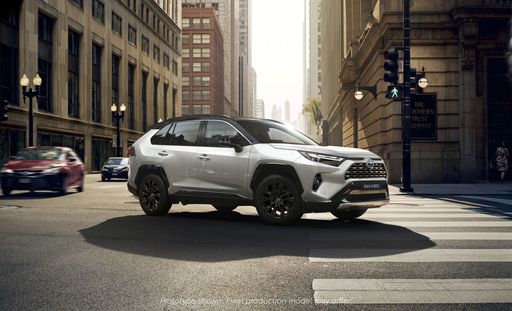 @ Toyota
@ Toyota
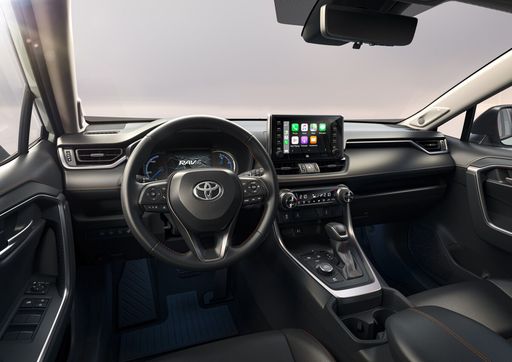 @ Toyota
@ Toyota

|

|
|
|
|
Kostnader och förbrukning |
|
|---|---|
|
Pris
485200 - 566100 kr
|
Pris
473600 - 750900 kr
|
|
Förbrukning L/100 km
2 L
|
Förbrukning L/100 km
1 - 5.6 L
|
|
Förbrukning kWh/100 km
-
|
Förbrukning kWh/100 km
-
|
|
Elektrisk räckvidd
45 km
|
Elektrisk räckvidd
75 km
|
|
Batterikapacitet
-
|
Batterikapacitet
-
|
|
CO2
46 g/km
|
CO2
22 - 128 g/km
|
|
Tankvolym
43 L
|
Tankvolym
55 L
|
Mått och kaross |
|
|---|---|
|
Karosstyp
SUV
|
Karosstyp
SUV
|
|
Säten
5
|
Säten
5
|
|
Dörrar
5
|
Dörrar
5
|
|
Tjänstevikt
1985 - 2052 kg
|
Tjänstevikt
1745 - 1910 kg
|
|
Bagageutrymme
359 L
|
Bagageutrymme
520 - 580 L
|
|
Längd
4545 mm
|
Längd
4600 mm
|
|
Bredd
1805 mm
|
Bredd
1855 mm
|
|
Höjd
1685 mm
|
Höjd
1685 mm
|
|
Max bagageutrymme
1108 L
|
Max bagageutrymme
1604 - 1690 L
|
|
Lastkapacitet
373 - 440 kg
|
Lastkapacitet
390 - 600 kg
|
Motor och prestanda |
|
|---|---|
|
Motortyp
Laddhybrid
|
Motortyp
Fullhybrid, Laddhybrid
|
|
Växellåda
-
|
Växellåda
Automatisk
|
|
Växellådsdetalj
-
|
Växellådsdetalj
CVT
|
|
Drivtyp
Fyrhjulsdrift
|
Drivtyp
Framhjulsdrift, Fyrhjulsdrift
|
|
Effekt (hk)
188 hk
|
Effekt (hk)
218 - 306 hk
|
|
Acceleration 0-100 km/h
10.90 s
|
Acceleration 0-100 km/h
6 - 8.4 s
|
|
Maxhastighet
162 km/h
|
Maxhastighet
180 km/h
|
|
Vridmoment
-
|
Vridmoment
-
|
|
Antal cylindrar
4
|
Antal cylindrar
4
|
|
Effekt (kW)
138 kW
|
Effekt (kW)
160 - 225 kW
|
|
Motorvolym
2360 cm3
|
Motorvolym
2487 cm3
|
Allmänt |
|
|---|---|
|
Modellår
2021 - 2022
|
Modellår
2024 - 2025
|
|
CO2-effektivitetsklass
B
|
CO2-effektivitetsklass
D, B
|
|
Märke
Mitsubishi
|
Märke
Toyota
|
Vilka drivlinor finns för Mitsubishi Eclipse Cross?
Tillgänglig som Fyrhjulsdrift.
De visade priserna och uppgifterna är uppskattningar baserade på tyska listpriser och kan variera beroende på land. Denna information är inte juridiskt bindande.
